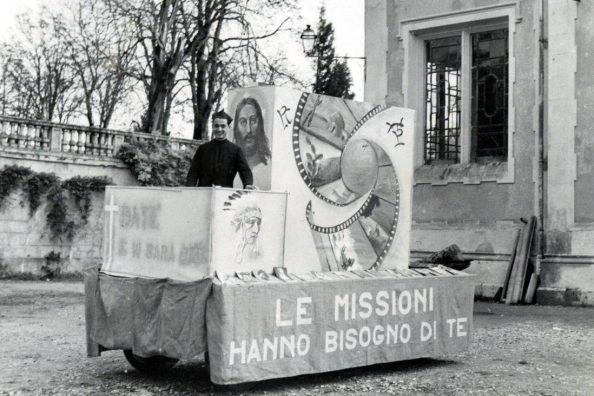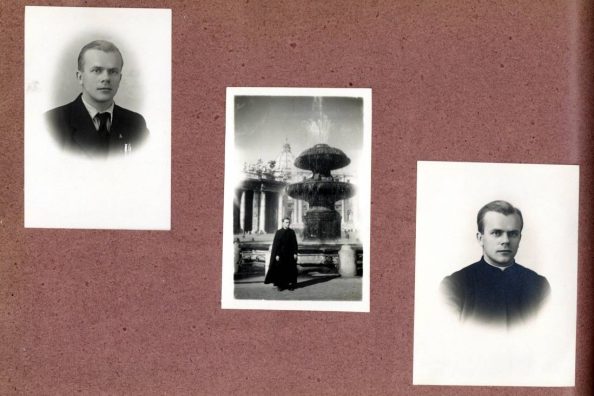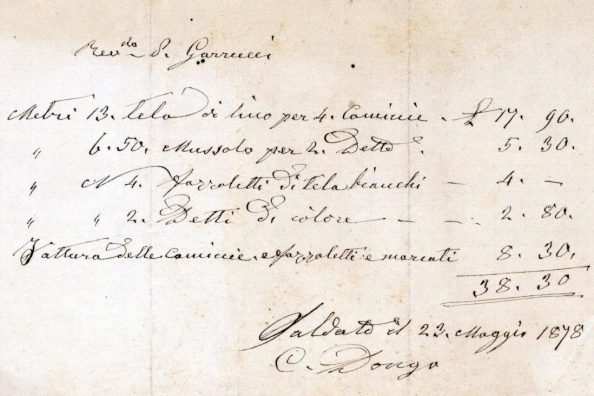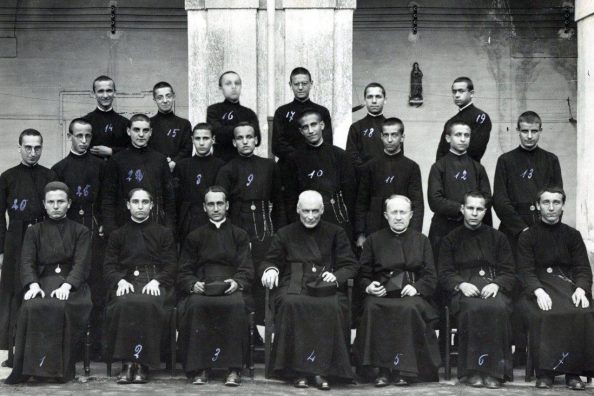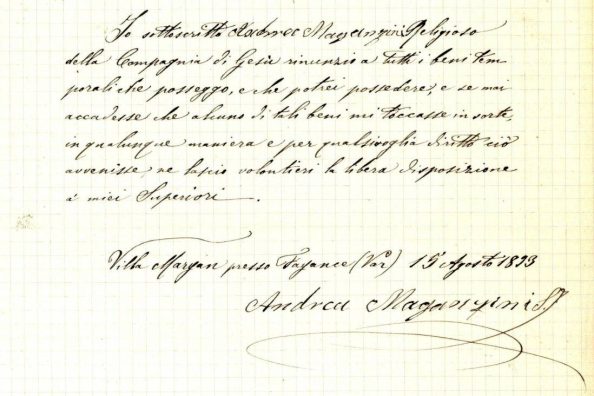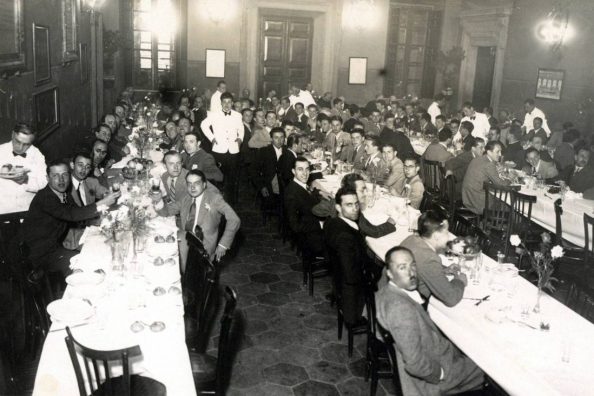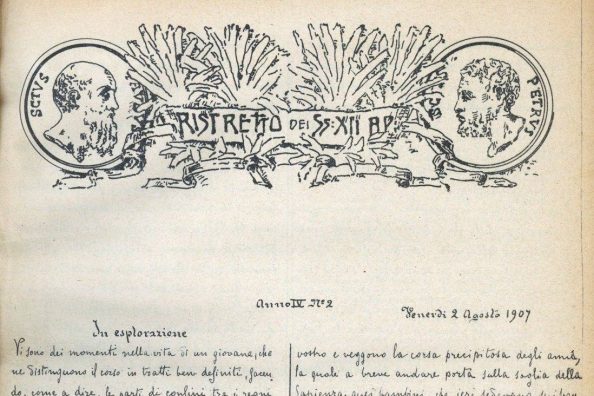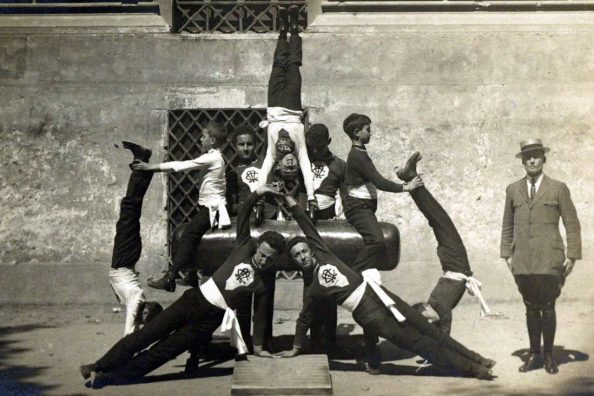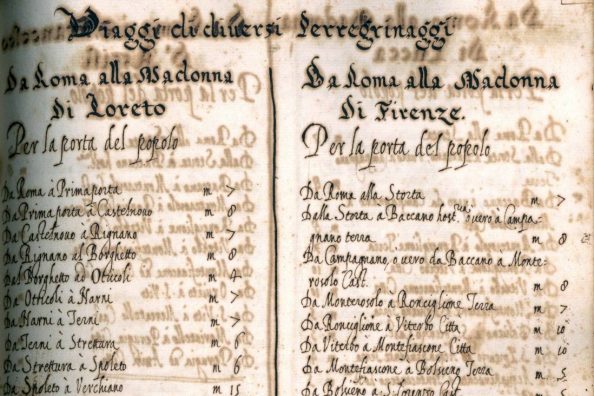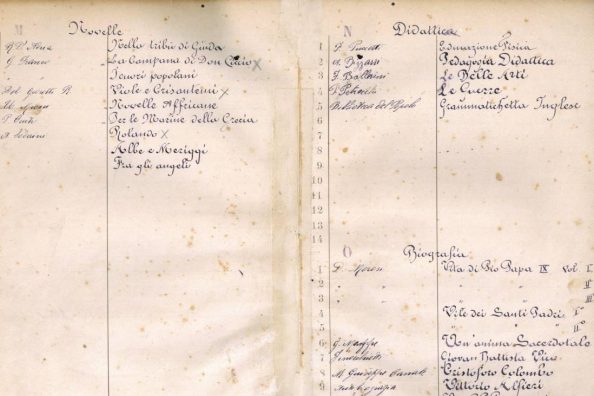Jesuit archivists of the Veneto-Milanese Province

The episodes dedicated to the archivists who took care of the archives of the five historical provinces continue. After the Roman and Neapolitan provinces, today it is the turn of the Veneto-Milanese province.
No archivist in the 19th century
Browsing through the catalogues of the province of Veneto – Milan we unfortunately do not find the name of any Jesuit in charge of the archives, neither as custos archivii, nor as prefect throughout the 19th century. We have also noticed this absence for the Neapolitan province in both the 19th and 20th centuries.
While it is true that all provinces had undergone forfeiture of their documentary holdings in 1773, the situation was not the same for all five provinces during the Risorgimento period. We saw in the previous episode that the Neapolitan province was again despoiled of its documentary fonds during the process of national unification.
In the provinces of Northern Italy the Jesuit archives still suffered losses between 1814 and 1861 but not as severe as in Southern Italy. Perhaps the surviving material in the provincial archives was not so substantial as to justify the appointment of an archivist. In fact, much of the documentation that makes up the collection today was still in the houses where it was produced at the time, since the residences were open and many colleges would not be closed until the 19th and 20th centuries.
The first half of the 20th century
The first mention of a provincial Jesuit, again, comes very late. We are in fact in 1928 and in Venice, where the Venetian-Milanese Province had its headquarters at the time, we find the name of Fr Giuliano Cassiani Ingoni, who was in charge of the archives, and not by chance was also in charge of the province’s catalogue and the magazine “Notizie” (News). Each province had its own magazine to publish articles on works, apostolates, missions and obituaries of fathers and brothers.
The historical archives of the Province was therefore located in Venice. Unlike the Roman and Neapolitan Provinces, which had always maintained their historical headquarters, respectively in the Gesù residence in Rome and the Gesù Nuovo in Naples, the Veneto-Milan Province had several locations: Venice, Padua, and Verona.
From 1941, the post passed to Stefano Corradi, who was also appointed prefect of the library. Fr. Corradi, over the years, is also entrusted with the care of the ‘antiquites’ antique things, referring to furnishings, paintings and precious objects. He is among the Fathers listed among the collaborators of the Province but lives in Gallarate and it is there that he performs the duties of library prefect. Let us assume therefore that the Jesuit did not take care of the historical archive full time, living elsewhere.
P. Cassiani Ingoni is still alive when Corradi replaces him, but he has been assigned to Padua, so we can assume that he can no longer take care of the archive for his new destination.
The curia, meanwhile, moved from Venice to Padua. We do not know the exact date of the move of the historical archive, but we can assume that it too moved with the curia, at least for the current part.
The archives of the Venetian-Milanese Province and the archives of the Province of Turin shared the same location, Gallarate, for some years before being transferred to our historical archive.
From the middle of the 20th century to the Province of Italy
The task of archivist was entrusted to various Jesuits during the 1950s and 1960s. Fr Corradi in fact took care of the archive until 1952 when Fr Mario Colpo was appointed as custos archivii. The Jesuit remained in charge until 1959.
His successor FR. Mario Giomo, in the featured image for today’s article, also has various other duties: he is the secretary of the provincial, prefect of the library and in charge of the magazine ‘Notizie’.
In the early 1960s, the office passed to Fr. Lorenzo Saggin, who also held the office of secretary to the provincial, at which time the Curia was in Verona and it is probable that the archives, too, followed the Curia.
His successors, active after 1978, will be mentioned in the episode on the Province of Italy.
In contrast to the Roman and Neapolitan Provinces where five brothers took care of the archive, with the position of assistant, in the Venetian-Milanese Province there are no brothers, mentioned in the catalogue, engaged in this task.
House archives
Consulting the catalogue, we also find some scant reference to the archivists of the individual communities.
In fact, we discover that in 1941 Fr Saraçi Anton was in charge of the archives of the seminary in Shkodra, a fund that, however, suffered several setbacks following the establishment of the communist regime of Enver Hoxha. In fact, our archive has no papers produced locally in the communities of Shkodra and Tirana, such as house diaries, registers, and personal papers of the Jesuits who died here. These documents were confiscated by the regime and are now in the Albanian state archives.
At the same time, several thousand kilometres away, one of his confreres, Fr Andrea Rondano, was taking care of the archives of the mission in Calcutta, India.
In the next instalment of this cycle, we will look at the Turin Province and the fathers and brothers who worked in its historical archives.
Maria Macchi
